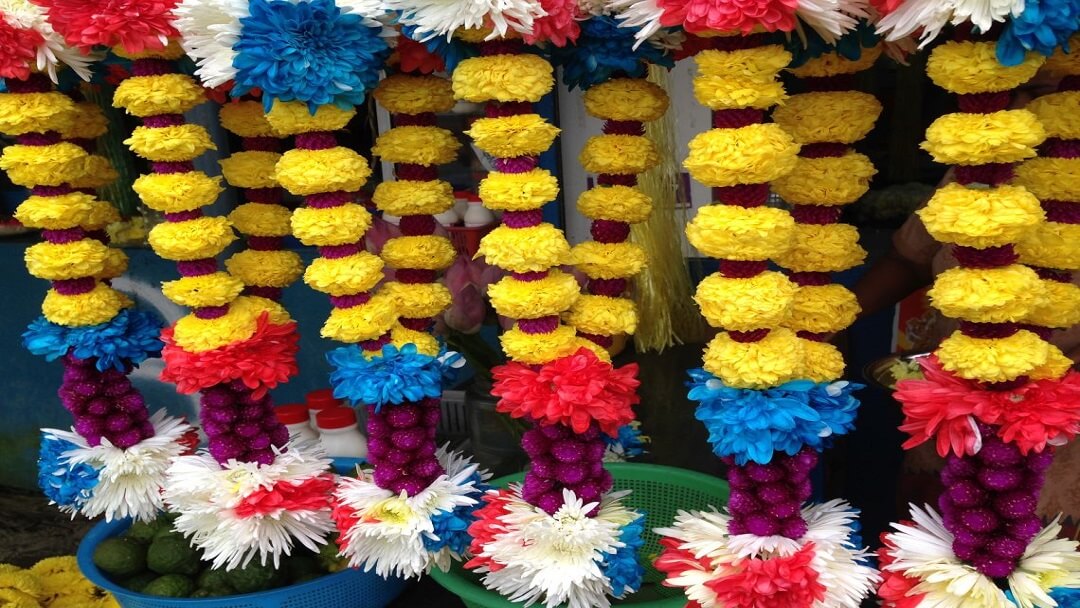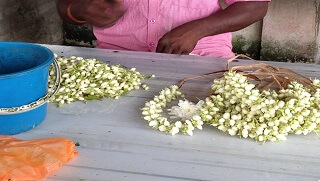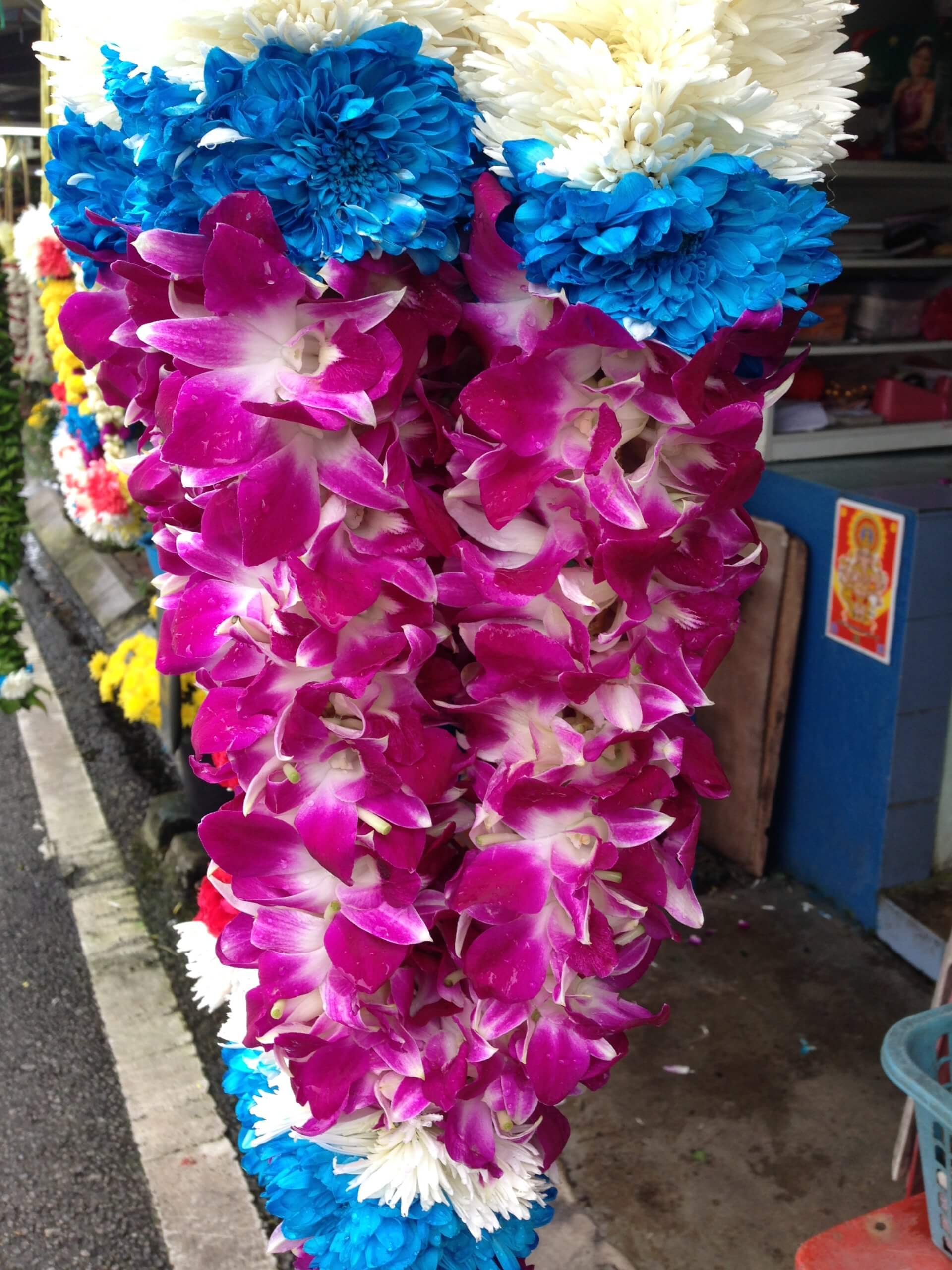Imagine walking through the entrance of a flower shop. Instantly, delightful scents tease the nose and envelope the senses. Fragrances surround the body and consume the spirit. There is something special about being near fresh flowers that uplifts our mood. Now, imagine walking down a street surrounded by stalls of flower cart vendors. You indulge in a similar experience.
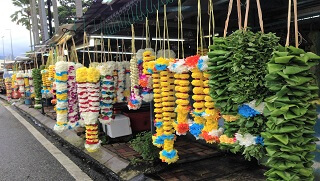
Lovely flower garlands are sure to be spotted on any trip to India and even in most Indian neighborhoods of other Asian countries. This is because flower garlands hold a place in Indian culture, much like in Hawaiian culture. In Sanskrit, the ancient Indian language, the word “mala” means garland. Think of mala meditation beads or rosary beads.

Traditional Uses
In Indian culture, the use of flowers, and the art of making garlands, is an ancient practice that still plays a significant role today.

Garlands, used for religious purposes, adorn many statues, temples, and altars in India. Various gods in Hindu mythology received bouquets as gifts or to ward off evil spirits. Folklore describes each Hindu deity as having a favorite flower. For example, Lakshmi, the goddess of good luck, prefers red lotus. Flower garlands are still part of religious ceremonies or rituals such as Hindu “puja” or worship.
Indian wedding ceremonies incorporate flowers in a big way. Varmala (sometimes called Jaimala) is the tradition where the bride and groom exchange flower garlands. It symbolizes entwined spirituality and respect for the other partner. Also, flower garlands acknowledge two families merging. While red and gold are traditional colors, more exotic colors are used these days.
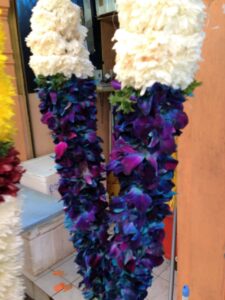
Other Uses
Presenting visiting dignitaries or house guests with strings of flower garlands denotes respect and honor. Even decorating entrances to houses with flower garlands illustrates a symbol of welcome for visitors.

Family and friends may also receive flower garlands when embarking on or returning from a trip or journey. This is because the flower garlands represent good luck. Starting a new project or undertaking can be commemorated with brilliant flower garlands.
How to Make
Garland-making generally prefers flowers with strong fragrances, such as jasmine. The complex assembly begins with the gentle piercing of each flower at its base. The flower is then attached to string or bark. Strung together, the flowers lay one by one. Consequently, the garland begins to take shape. This delicate and tedious process requires patience by the artisan. Inserting a different color or type of flower at varying intervals creates patterns.
While flowers are most common, other natural elements may also be used. For example, leaves, grass, and even fruit such as limes, make unusual garlands. Note that lime garlands are said to ward off evil spirits.
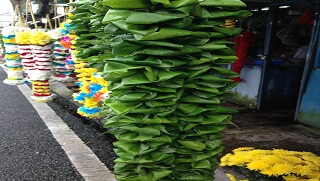
Skilled artisans can then craft the flower strings into various accessories such as garlands, wreaths, or head adornments called chaplets. Women often wear gajras, which are flower pieces that adorn the hair.
Source: Vyas, Mitraja. (2017). Mala: The floral garlands of India.

